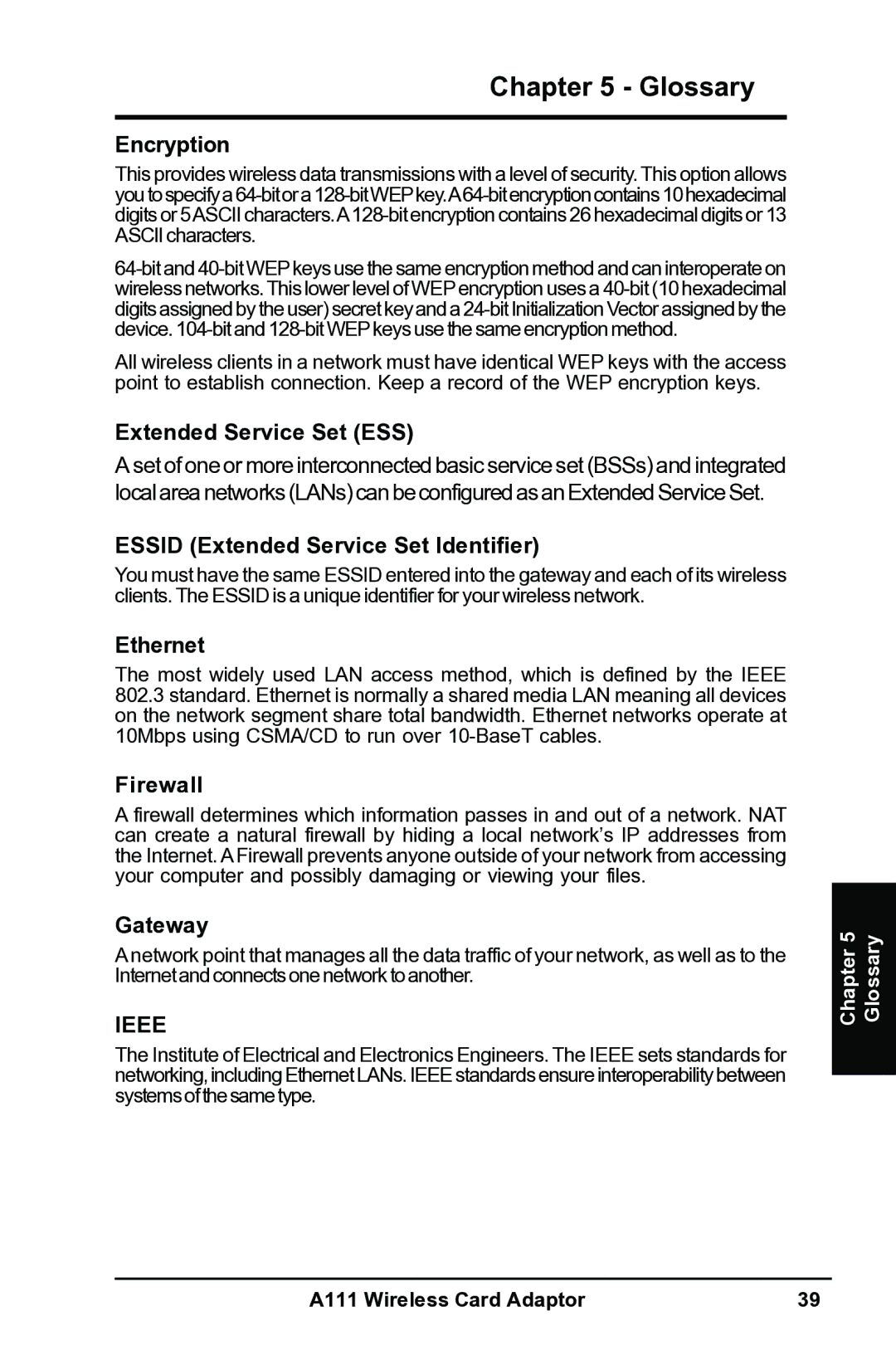
Chapter 5 - Glossary
Encryption
This provides wireless data transmissions with a level of security. This option allows
All wireless clients in a network must have identical WEP keys with the access point to establish connection. Keep a record of the WEP encryption keys.
Extended Service Set (ESS)
A set of one or more interconnected basic service set (BSSs) and integrated localareanetworks(LANs)canbeconfiguredasanExtendedServiceSet.
ESSID (Extended Service Set Identifier)
You must have the same ESSID entered into the gateway and each of its wireless clients. The ESSID is a unique identifier for your wireless network.
Ethernet
The most widely used LAN access method, which is defined by the IEEE
802.3standard. Ethernet is normally a shared media LAN meaning all devices on the network segment share total bandwidth. Ethernet networks operate at 10Mbps using CSMA/CD to run over
Firewall
A firewall determines which information passes in and out of a network. NAT can create a natural firewall by hiding a local network’s IP addresses from the Internet. A Firewall prevents anyone outside of your network from accessing your computer and possibly damaging or viewing your files.
Gateway
Anetwork point that manages all the data traffic of your network, as well as to the Internetandconnectsonenetworktoanother.
IEEE
The Institute of Electrical and Electronics Engineers. The IEEE sets standards for networking,includingEthernetLANs.IEEEstandardsensureinteroperabilitybetween systemsofthesametype.
Chapter 5 Glossary
A111 Wireless Card Adaptor | 39 |
